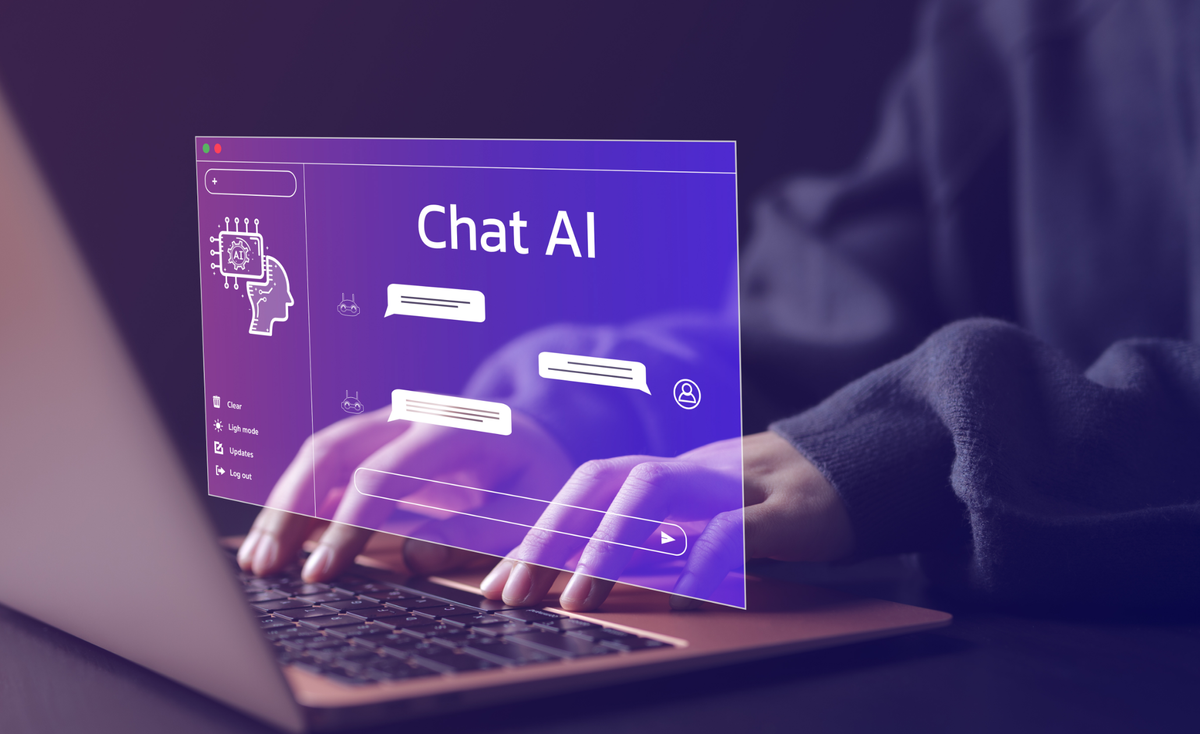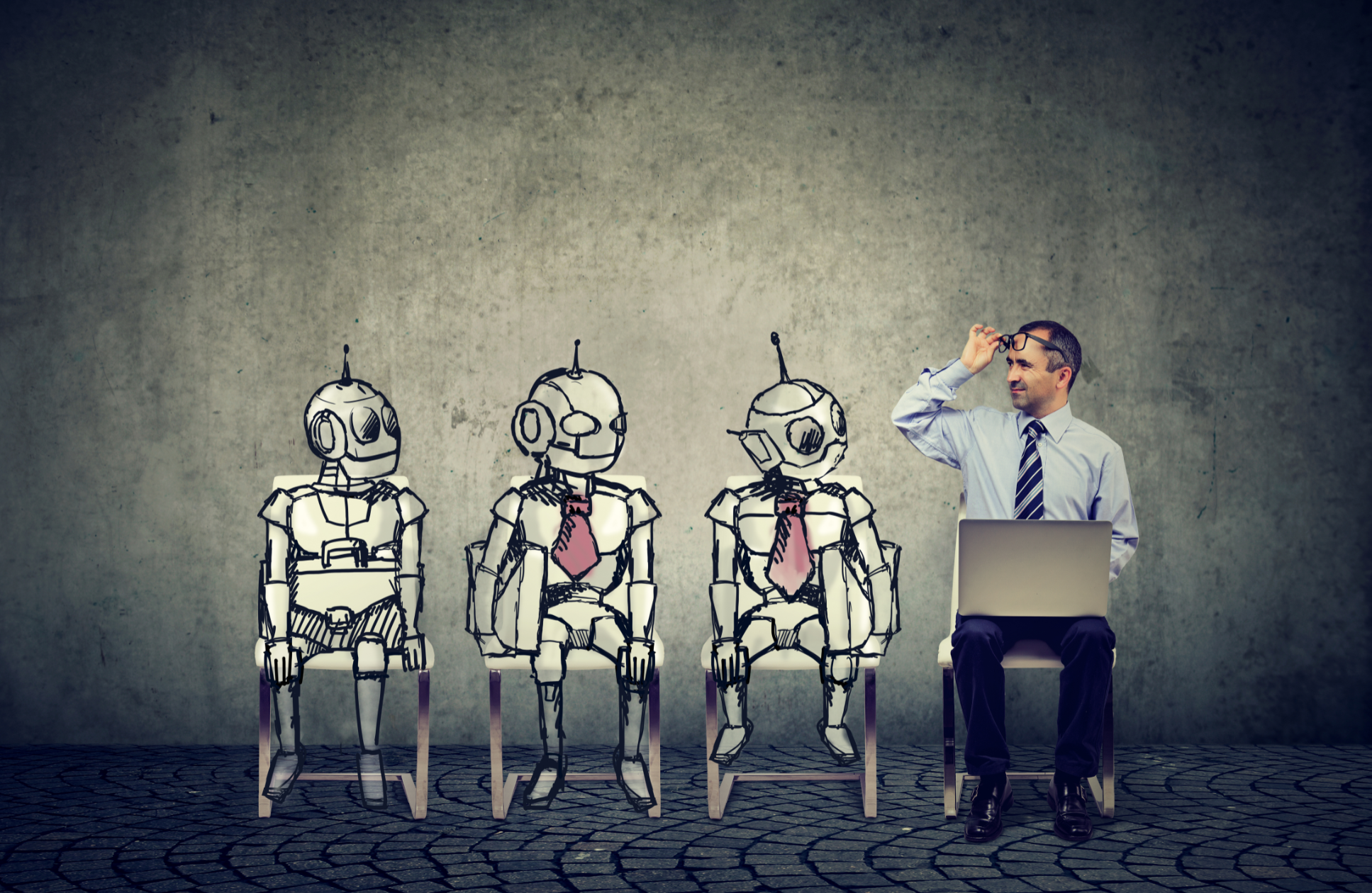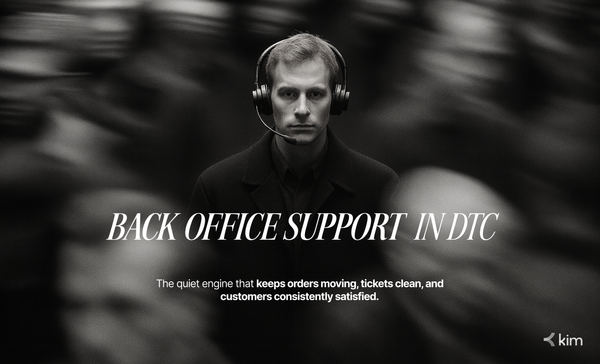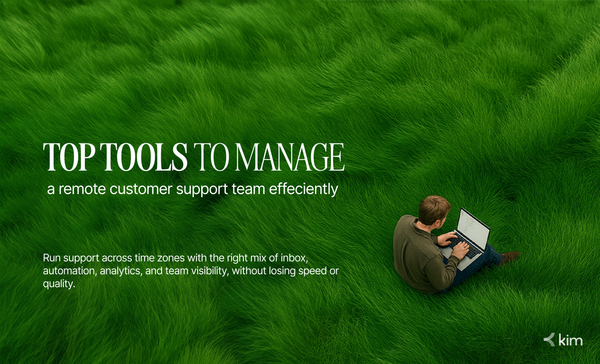Should You Use a Chatbot or Human Agent? Understanding the Differences
Leverage chatbots for L1 queries & human agents for L2 & L3 in your e-commerce customer service. Kim.cc's GPT-powered solution provides 24/7 support & a seamless experience

The landscape of e-commerce customer service is rapidly evolving. Gone are the days of solely relying on email or phone support. Today, businesses are strategically integrating chatbots and human agents to create a seamless and efficient customer experience. But with both options on the table, deciding which is right for your DTC brand can be a challenge.
At Kim.cc, we believe in harnessing the power of AI for streamlined customer support. Our perspective? Leverage GPT-powered chatbots for handling Level 1 (L1) queries, while reserving human expertise for addressing complex Level 2 (L2) and Level 3 (L3) workflows. This hybrid approach allows you to offer 24/7 availability for basic inquiries, while ensuring a personalized touch for intricate customer needs.
Key Takeaways
- Understanding Query Levels: L1, L2 & L3
- How Can Chatbots Manage L1 Queries?
- The Role of Human Agents in Handling L2 and L3 Queries
- Comparative Analysis: Chatbots vs Human Agents
- The Hybrid Approach: Integrating Chatbots and Human Agents
- Measuring Success
Understanding Query Levels: L1, L2 & L3
Before diving deeper, let's establish a common ground. Customer queries can be categorized based on their complexity:
- L1 Queries: These are straightforward inquiries with clear-cut answers. They often involve order status checks, product details, shipping information, or basic troubleshooting.
- L2 Queries: These queries require some level of investigation or decision-making. They might involve product returns, exchange requests, minor technical difficulties, or billing clarifications.
- L3 Queries: These are complex issues that demand specialized knowledge or problem-solving skills. They could involve escalated complaints, fraudulent activity, account security concerns, or highly technical product inquiries.
How Can Chatbots Manage L1 Queries?
Chatbots powered by advanced AI like GPT-3 excel at handling L1 queries. Here's how they benefit your e-commerce business:
- 24/7 Availability: Unlike human agents with limited working hours, chatbots are always available to answer customer questions, fostering a sense of immediate support.
- Fast Response Times: Chatbots can instantly respond to inquiries, minimizing customer wait times and frustration.
- Consistent Answers: Chatbots provide pre-programmed responses based on a vast knowledge base, ensuring consistent and accurate information for every customer.
- Reduced Support Costs: Chatbots offer a cost-effective way to address a large volume of L1 queries, freeing up human agents to focus on complex issues.
The Role of Human Agents in Handling L2 and L3 Queries
While chatbots offer significant advantages, they don't replace the human touch. Here's where human agents shine:
- Empathy and Emotional Intelligence: Human agents can understand and respond to customer emotions, providing reassurance and building trust during challenging situations.
- Complex Problem-Solving Skills: Human expertise is crucial for handling intricate queries, navigating through technical issues, and finding creative solutions.
- Personalized Customer Interactions: Agents can tailor conversations to individual customer needs, fostering stronger brand loyalty.
- Building Customer Relationships: Human interaction allows for building rapport with customers, creating a more positive brand image.
Comparative Analysis: Chatbots vs Human Agents
The Hybrid Approach: Integrating Chatbots and Human Agents

Kim.cc advocates for a hybrid approach that leverages the strengths of both chatbots and human agents. Here's how it works:
- Initial Contact by Chatbot: A GPT-powered chatbot greets customers, gathers basic information, and attempts to resolve L1 queries through pre-programmed responses or decision trees.
- Seamless Handover to Humans: If the query becomes complex (L2 or L3), the chatbot can intelligently route the customer to a live agent with relevant expertise. This ensures a smooth transition and avoids frustrating dead ends.
- Human Support with Access to Chat History: The agent receives a complete chat history, allowing them to understand the customer's issue context and provide personalized support.
How to Implement a Hybrid Customer Support System
Here are some key steps to consider when implementing a hybrid customer support system:
- Identify Your Customer Needs: Analyze your customer support data to understand the type and volume of queries received. This will help you determine the ideal balance of chatbots and human agents.
- Invest in a Quality Chatbot Platform: Choose a chatbot platform that utilizes GPT-like technology for accurate information retrieval and natural language processing.
- Train Your Chatbot Effectively: Train the chatbot with a comprehensive knowledge base of your products, policies, and frequently asked questions. Include clear escalation triggers that identify when a human agent is needed for a more nuanced interaction.
Empowering Human Agents
A successful hybrid system requires well-equipped human agents. Here's how to empower your team:
- Invest in Agent Training: Provide agents with in-depth product knowledge, customer service best practices, and training on handling complex inquiries and escalated situations.
- Utilize Conversation Analytics: Leverage chatbot conversation data to identify common customer pain points and equip agents with the information they need to proactively address issues.
- Promote Agent-Customer Collaboration: Encourage agents to collaborate with customers to reach solutions. This fosters trust and empowers customers to feel involved in the resolution process.
Measuring Success
Tracking key metrics is crucial for optimizing your hybrid system. Here are some key performance indicators (KPIs) to monitor:
- Customer Satisfaction Score (CSAT): Track customer satisfaction with the overall support experience.
- First Contact Resolution (FCR): Measure the percentage of queries resolved by the chatbot in the first interaction.
- Average Handling Time (AHT): Monitor the average time it takes to resolve customer issues, both by chatbot and human agents.
- Agent Average Resolution Time: Track the average time it takes for human agents to resolve customer issues.
Conclusion
By implementing a well-designed hybrid customer support system that integrates Kim.cc's GPT-powered co-pilot with skilled human agents, your e-commerce business can achieve the best of both worlds: 24/7 availability for basic inquiries paired with a personalized touch for complex customer needs. This approach fosters customer satisfaction, reduces support costs, and ultimately contributes to a stronger brand reputation.
Ready to take your customer service to the next level?
Kim.cc offers a comprehensive suite of solutions to help you build a winning hybrid customer support system. Contact us today to learn more and discover how we can help you create a seamless and delightful customer experience for your DTC brand.




